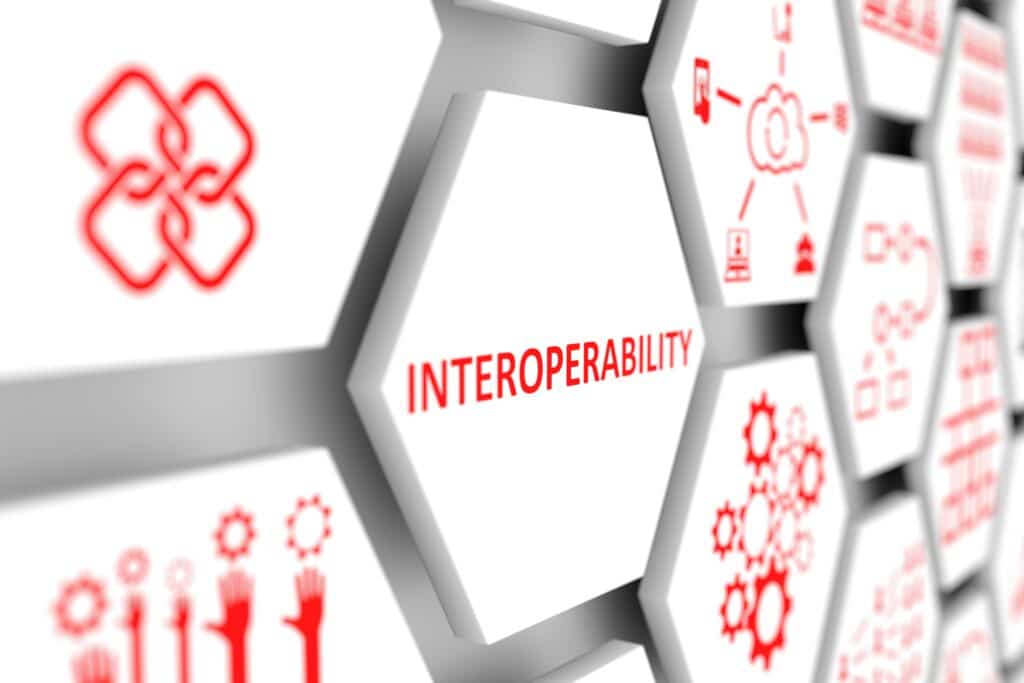Introduction
Over the past year-and-a-half, supply chain disruptions related to COVID-19 have further demonstrated the need for updated insights into operations, data visibility, inventory levels, and other bottlenecks. The need for an efficient and holistic approach throughout entire supply chains has become increasingly integral. Adopting a holistic approach to supply chain management is essential to the success of many companies, as it will ultimately enhance visibility, improve operational efficiencies, and provide a clear roadmap to revenue protection.
Companies can no longer afford to manage their supply chains in individual silos, as this approach limits visibility, produces inaccuracies and significantly impacts overall business performance. When a company becomes too reliant on a single vendor or solution, this can result in a vendor lock-in. Vendor lock-in is a common problem for companies that heavily rely on proprietary software solutions, technologies, or platforms. When businesses are unable to move to an alternative vendor without incurring substantial expenses, significant costs and efforts arise. Organizations on a steep growth path are vulnerable to vendor lock-in, as the solutions that were initially a good fit no longer work as their business expands.
In an ideal world, organizations should be able to freely “plug-and-play” between competing vendors and technology stacks, streamlined between geographic locations. However, many vendors make it challenging for their customers to change their infrastructure and technologies to that of a competitor’s or make it interoperable. Allowing customers to do so could result in lost revenue streams, as customers aren’t funneled toward long-term commitments and partnerships.

The Core of the Problem
Lack of standardization is one of the main causes of vendor lock-in, as companies are restricted to specific technologies due to their proprietary nature. Vendor lock-in often leads to an unsustainable operating environment, where organizations are not able to perform to their full potential and cannot effectively maximize their resources. However, in many cases, companies are often reluctant to switch technologies due to high upfront switching costs and potential operational interruptions.
The industrial sector has a clear demand for real-time location solutions in a diverse array of use cases. Individual circumstances, such as processes, spatial setups, and existing system landscapes are often very different and dynamic. Technologies, solution providers and hardware components on the market are unique, numerous, and specialized. Use cases and solutions grow over time.
When looking for a solution based on specific use case requirements, customers and system integrators inevitably have to come to terms with the existing system landscape – consisting of various technologies, providers and hardware components. This is not a simple task, as system landscapes are often closed, proprietary environments. Existing RTLS middleware solutions generally consist of providers adding new functionalities without revising the internal core. From the outside, they may appear solid and robust. However, in reality, they are not ready to scale to new dimensions and newly created solutions will only join the vast landscape of isolated solutions.
Replacing existing systems is generally possible but difficult due to costs, effort and risk management resulting from vendor lock-in. Furthermore, synergies with other solutions often fail. Companies should be focused on streamlining their systems and not making them more complex. They should not make themselves dependent on individual technologies, solution providers or hardware providers – but this is easier said than done.

The Solution
A location middleware represents an ideal solution to streamline location data. However, middlewares are also proprietary and proprietary interfaces must be set up to all other systems. This is certainly a step in the right direction, but the fundamental problem merely shifts to another level. Even though this may be a satisfactory solution for a single location, it gets difficult when an organization needs to scale up and several locations need to be considered. The organization needs to account for other plants, suppliers, service providers, and customers.
This is where omlox, the world’s first open locating standard, sets itself apart from the competition. omlox unifies all location data in order to bridge the gap described above, eliminating vendor lock-in for customers. As a widely-recognized and utilized standard, omlox facilitates true vendor independence, comprehensive interoperability, and simple integration of technologies and systems across location and company boundaries. In doing so, omlox does not replace the business models of individual solutions; it enables interoperability, thereby creating clear added-value for customers.
omlox was developed in an agile way, utilizing an extensive set of use cases and incorporating state-of-the-art software and API design. The omlox API streamlines the integration of RTLS solutions into software applications. It offers a standard open interface with the ability to integrate multiple positioning technologies. omlox is defined in an open and collaborative manner, and is managed by the PROFIBUS and PROFINET International (PI) organization, the largest automation community in the world. This is achieved through working groups that ensure the standard is enhanced and propelled in a truly democratic way.
The overall architecture of omlox is also quite unique. Having trackables that unify different locating technologies from any vendor is certainly a game changer. In this manner, an application does not need to worry about the underlying location technology and can just ask “where a trackable is”. This allows for the addition of any future locating technology, without the need to change the application logic.

Conclusion
We at Flowcate are the first and only organization worldwide to achieve the status of “omlox-ready” through the development of the first reference implementation of an omlox middleware – called the DeepHub®.
The DeepHub enables the precise management of geofences, zones, and trackables across different locating technologies and represents the centrepiece to harness the full potential of the omlox standard. Thereby enabling an entirely new spectrum of use cases in the framework of real-time indoor and outdoor tracking.
This allows software applications to collect location data from machines, assets, workers, and dynamic vehicles, simplifying the ability to link different positioning solutions to existing software applications through one single interface.
Whether you are looking to enhance an existing RTLS middleware or plan to integrate an entirely new one, we are your fast-lane to the omlox ecosystem and are happy to help your solution become interoperable.
Get in touch to learn more about our DeepHub – the premier omlox-ready middleware.
